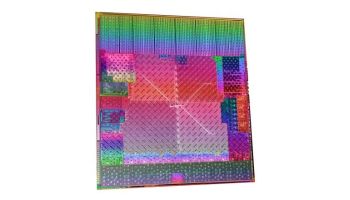AMD Low-Cost, Six-Core Desktop Chip Targets Intel

In a release of several desktop processors, AMD has released a six-core Phenom II chip costing significantly less than any Intel Core processor
Advanced Micro Devices (AMD) has always used price as a key differentiator in the ongoing competition with its much larger rival Intel. This mindset has continued with the latest desktop PC processors to be unveiled by the company. Included among the new chips is the Phenom II X6 1075 processor.
The six-core chips are priced at less than $250 each in shipments of 1,000 chips. By comparison, Intel offers a number of six-core chips, the cheapest of which is the i7-970, with a price of $885, according to Intel’s Website.
The Phenom II X6 includes AMD’s Turbo Core power-boosting feature, introduced earlier this year. When three or more of the cores in the chip are not being used and more power is needed, this ramps up the speed on active cores from 3GHz to 3.5GHz.
When all cores are idle, a Cool’n’Quiet feature cuts this frequency to 800MHz to reduce power consumption and drop the core temperatures.
Five more releases
AMD also unveiled two Black Edition chips which make it easier for users to overclock the processors when more speed is needed. These chips are the quad-core Phenom II X4 970 BE and the Phenom II X2 560 Black Edition processors.
There also are three new Athlon chips for low-end systems. These comprise the dual-core Athlon II X2 265, the triple-core Athlon II X3 450 and the quad-core Athlon II X4 645. The cheapest of the three is the Athlon II X2 which comes in at $76.
AMD’s push to under-price Intel came into full focus last week in San Francisco. While hosting the Intel Developer Forum 2010, Intel executives introduced its upcoming Sandy Bridge microarchitecture but their AMD counterparts were in a nearby hotel suite showing off their Zacate APU (Accelerated Processing Unit) which, like Sandy Bridge, offers compute and graphics capabilities on a single piece of silicon.
Bob Grim, director of client platform marketing at AMD, claimed that his company would have an advantage over Intel in the different entry points they are targeting for their new chips. The Zacate processor will be used in midrange systems in the $500 range, he said, but he expects Sandy Bridge to appear first in high-end PCs and then cascade down to the midrange and low-end over time.
“We’re bringing it in at the heart of the mainstream market,” he said, adding that the strategy will make AMD technology available to more people, more quickly.
Systems based on Sandy Bridge and Zacate chips are scheduled to appear in 2011.
